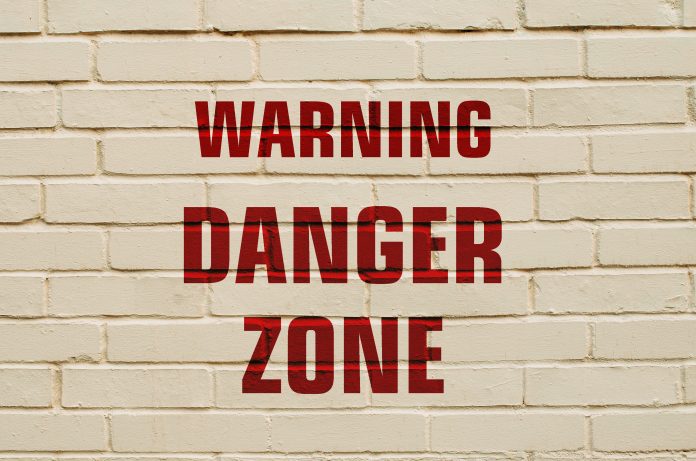Do you know where the danger zones are in your home? Do you know how to make them safer?
Your Life, Your Home, Your Freedom
Your home provides independence. It is the place you feel most safe. However, there are dangers in your home you need to be aware of. The purpose of this book is to help you create a safe environment where you can feel secure and sheltered from accidents and injuries.
Remaining at home is not just the preferred option; the high cost of assisted living also makes it an economical choice. However, your home must be maintained to the highest safety standards possible, so it can fulfill your needs.
America Is Aging
1. One in every three adults age 65 or older takes a fall each year.
2. Among older adults 55% of all falls take place inside the home.
3. More falls injuries are caused from a standing height while walking, not by climbing stairs as you might suspect.
4. 2.3 million injuries from falls among older adults were treated in emergency departments in 2010 and more than 662,000 of those were hospitalized.
5. One American turns 50 every 7 seconds – more than 12,500 people a day.
6. Those over 50 will represent 45% of the U.S. population by 2015!
7. There are currently 35 million baby boomer households in America.
8. Over the next 18 years, boomers will turn 65 at a rate of 8,000 per day.
9. Those over 65 currently number over 70 million.
You Can Avoid Most Injuries
Many injuries are caused by hazards that are overlooked, but can be easily fixed. Many injuries can be prevented by identifying these hazards and taking some simple steps to correct them.
Older persons whose bones are often more brittle are especially vulnerable to injuries from home accidents. A simple fall that results in a broken bone can become a serious disabling injury that will limit one’s independence.
As we age our senses of sight, touch, hearing, and smell tend to diminish, which can make us less aware of our surroundings. Our physical abilities may also lessen making tasks that require stretching, lifting, and bending more difficult. We may also experience a slowing of judgment and reaction time.
These normal changes in perception, physical abilities, and judgment make us more prone to accidents, but simple precautions and adjustments can help ensure a safe and accident-free home.
In this book, we identify 5 of the top danger zones in your home and provide easy modifications you can make to create a home as safe and comfortable as possible.
Top 5 Danger Zones And How To Make Each Safer
Kitchen:
Place all non-cooking accessories (potholders, dish towels, plastic utensils, etc.) away from the range or oven.
- If towels are hanging close to a burner, move the towel rack.
- Shorten or remove curtains that could brush against heat sources.
Move all small appliances close to wall outlets to eliminate extension cords.
- Add new outlets if necessary for convenience and safety.
Have a stable stepladder or step stool readily available to reach contents in upper cabinets.
- Move most often used items to more convenient locations.
- Purchase tools purpose-made for those with limited reaching ability.
Steps Or Stairway:
Install a stairlift if anyone is having difficulty getting up and down stairs.
- Enable easy access to a second floor bedroom or basement laundry facility.
- Grants may be available to help defray costs.
Install additional lighting; hire a licensed electrician if necessary.
- Each step and its edge should be clearly visible from above or below.
Replace worn treads or carpeting and make sure all are firmly attached.
Always wear non-slip soled footwear – no socks or slippers on the stairs.
Consider replacing indoor or outside stairs with a ramp.
- Ramps facilitate users with wheelchairs, walkers, canes, etc.
Check all railings and banisters to make sure they are tight and secure.
- Always use the railings when ascending or descending stairs.
Bathroom:
Bathrooms can be the most hazardous part of the home because of slippery, wet surfaces and frequency of use. Two-thirds of all home injuries occur in the tub or shower. A few simple modifications will make this area safer and more comfortable.
Install grab bars to enable entering the shower or tub.
Be sure all shower doors are safety glass or plastic, replace if necessary.
Place non-skid mat or sticky strips on the floor of tub and shower.
- Provide confidence and safety to user.
Mount a shower bench for showering while seated.
Fit a transfer bench on tub to ease getting in and out.
Living Room:
Research by the National Centers for Disease Control (CDC) suggests that one-third of all home accidents can be prevented by modification and repair. Removing barriers and safety hazards also helps alleviate the stress associated with the reduced physical capabilities of aging.
Reduce and remove clutter in main living areas.
Make sure all furniture is strong and sturdy enough to stay upright at all times.
- So someone walking by can use it as support
Clear passageways for persons using a cane, walker, or wheelchair.
Check that all cords (electrical, telephone, cable, etc.) are run along walls, not across areas where one needs to traverse.
Bedroom:
Install night lights and/or reflective tape to create night time pathways.
Remove all throw rugs and bathmats.
Keep a telephone within easy reach of bed.
These are just a few recommendations for the top 5 danger zones in your home. These suggestions should be kept in mind for all age groups, not just older people.






















